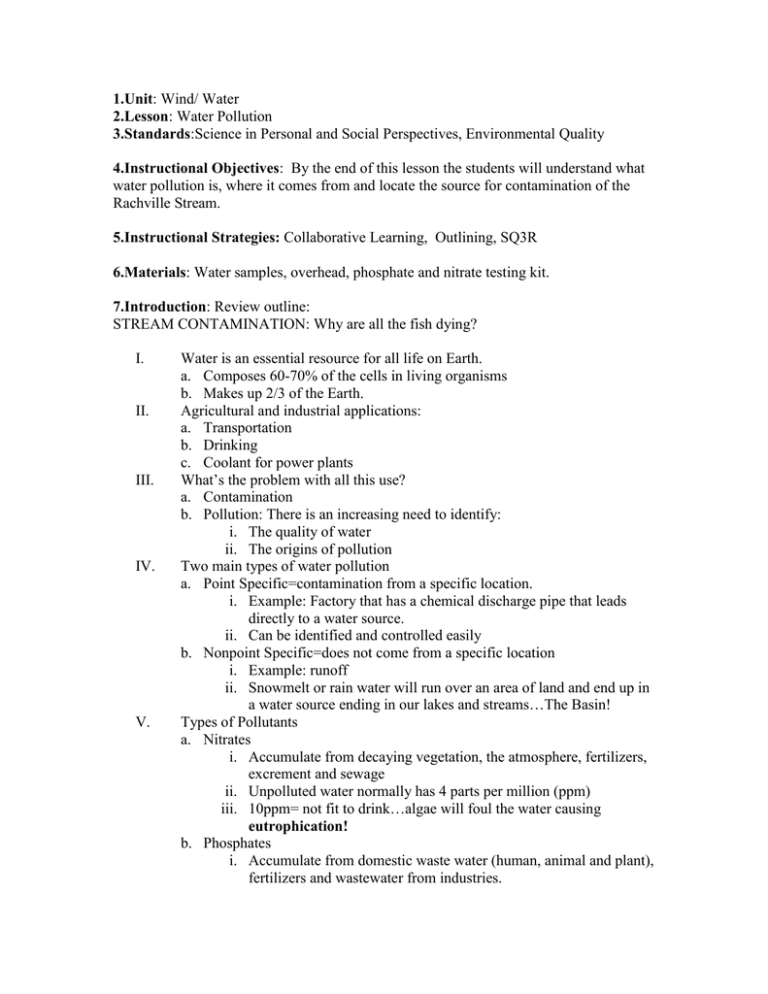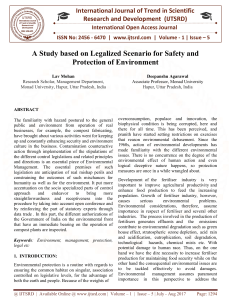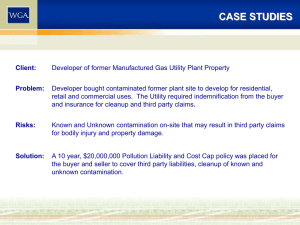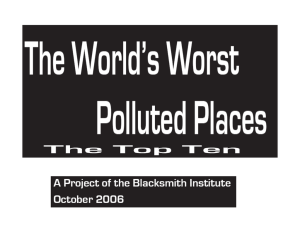complete+lesson+plan+for+esci+water+
advertisement

1.Unit: Wind/ Water 2.Lesson: Water Pollution 3.Standards:Science in Personal and Social Perspectives, Environmental Quality 4.Instructional Objectives: By the end of this lesson the students will understand what water pollution is, where it comes from and locate the source for contamination of the Rachville Stream. 5.Instructional Strategies: Collaborative Learning, Outlining, SQ3R 6.Materials: Water samples, overhead, phosphate and nitrate testing kit. 7.Introduction: Review outline: STREAM CONTAMINATION: Why are all the fish dying? I. II. III. IV. V. Water is an essential resource for all life on Earth. a. Composes 60-70% of the cells in living organisms b. Makes up 2/3 of the Earth. Agricultural and industrial applications: a. Transportation b. Drinking c. Coolant for power plants What’s the problem with all this use? a. Contamination b. Pollution: There is an increasing need to identify: i. The quality of water ii. The origins of pollution Two main types of water pollution a. Point Specific=contamination from a specific location. i. Example: Factory that has a chemical discharge pipe that leads directly to a water source. ii. Can be identified and controlled easily b. Nonpoint Specific=does not come from a specific location i. Example: runoff ii. Snowmelt or rain water will run over an area of land and end up in a water source ending in our lakes and streams…The Basin! Types of Pollutants a. Nitrates i. Accumulate from decaying vegetation, the atmosphere, fertilizers, excrement and sewage ii. Unpolluted water normally has 4 parts per million (ppm) iii. 10ppm= not fit to drink…algae will foul the water causing eutrophication! b. Phosphates i. Accumulate from domestic waste water (human, animal and plant), fertilizers and wastewater from industries. VI. ii. Phosphates from laundry detergent can overgrow algae iii. Phosphates are often added to water t control water “hardness” iv. Phosphate levels of more than 0.03ppm is hazardous. Experiment overview: a. A massive fish kill has occurred in the Racville stream in Raymond Township. Your job, as the forensic scientist is to determine what and who is responsible for the pollution. 8.Teaching Procedure: Review outline and students perform tests in small groups Small groups will test for the pollutants mentioned in the direct instruction, Each student’s report will have: Problem, Background Information, Hypothesis, Procedure, all done prior to the experiment Observations: Data Charts filled in during the experiment Conclusion: Identify the company responsible for the pollution 9.Closure: Students are to answer questions and report their results concluding who is responsible for the pollution. 10.Evaluation of Learning: Quiz. Lab Report 11.Accommodations: Lined paper with lesson outline may need to be provided in order for better structure of the notes. Explanation and definitions of certain terms should be reviewed to ensure understanding. 12.Enhancement/ Enrichment Activity: Water samples will be taken from the (1) Basin Area in order to test the Mingo Creek and (2) Indoor water samples from water fountains, sinks, etc. Will be included in Lab Report.











